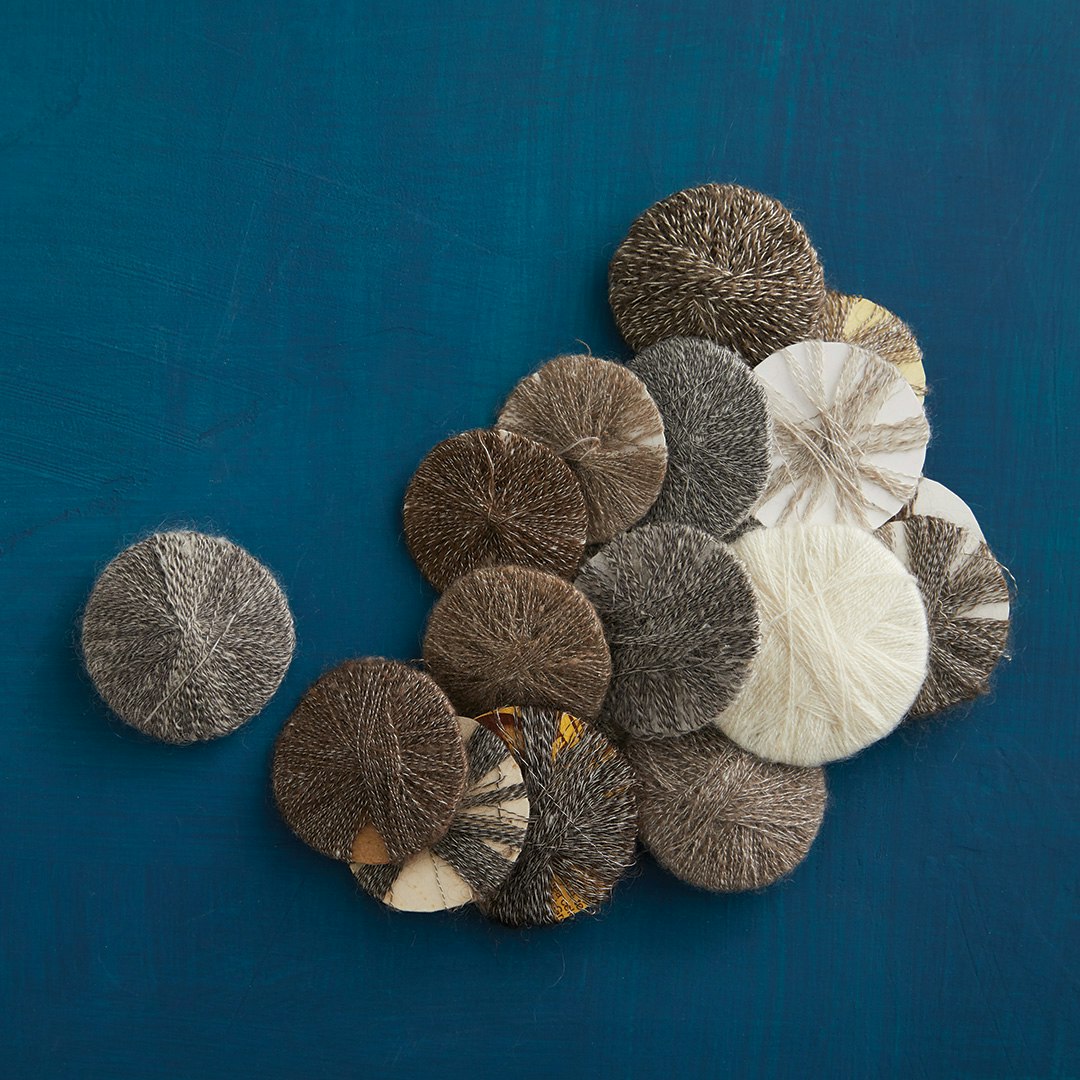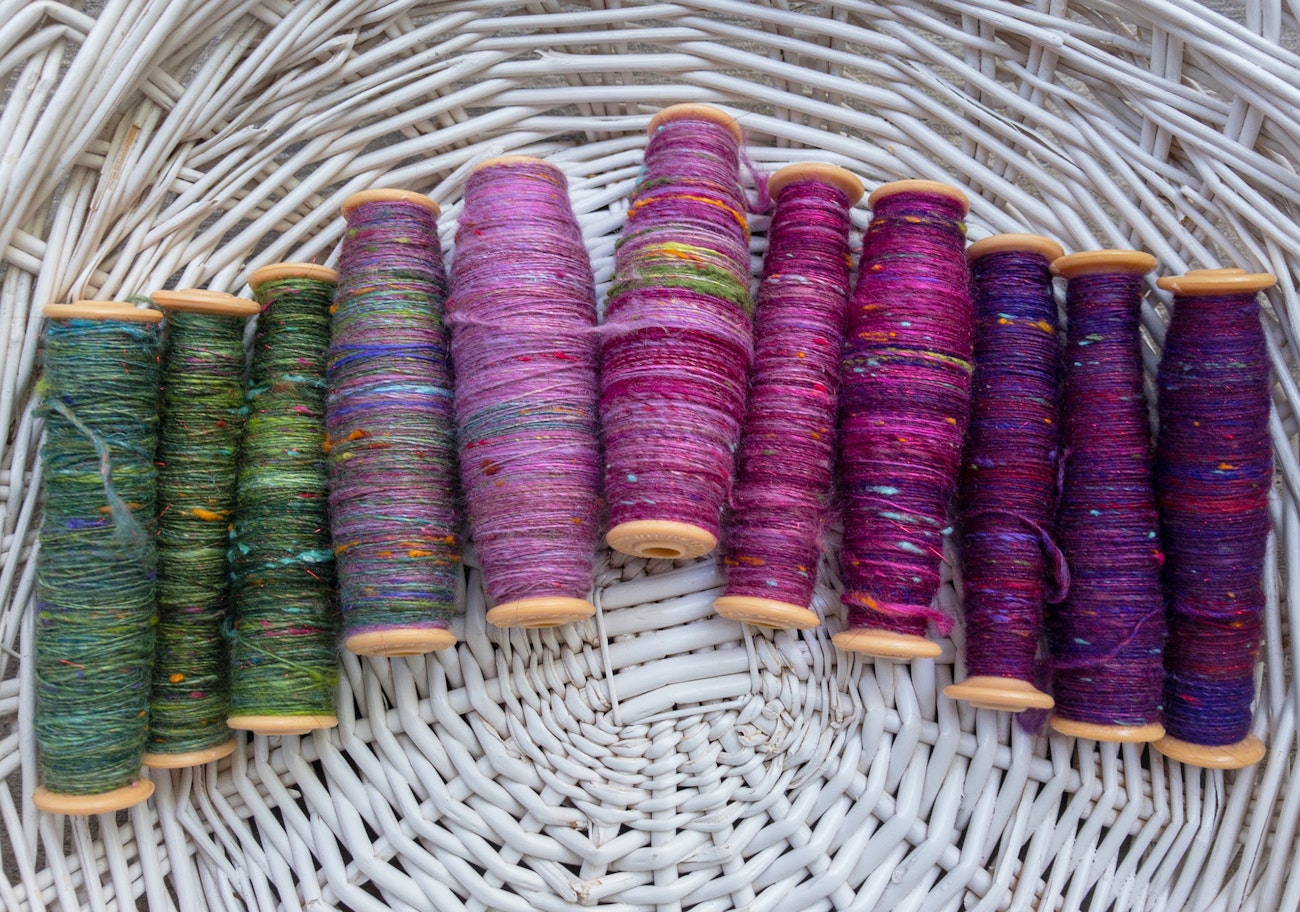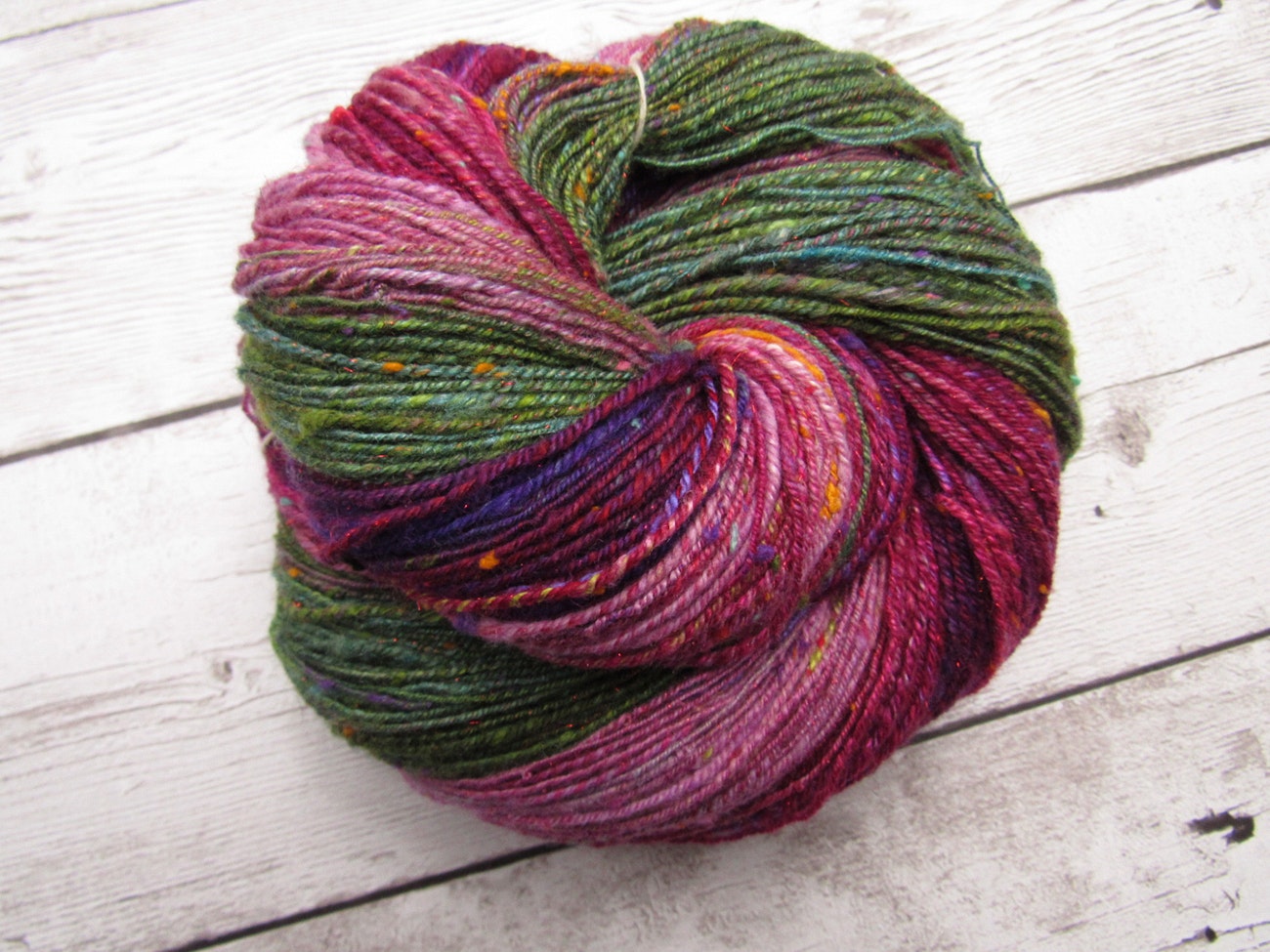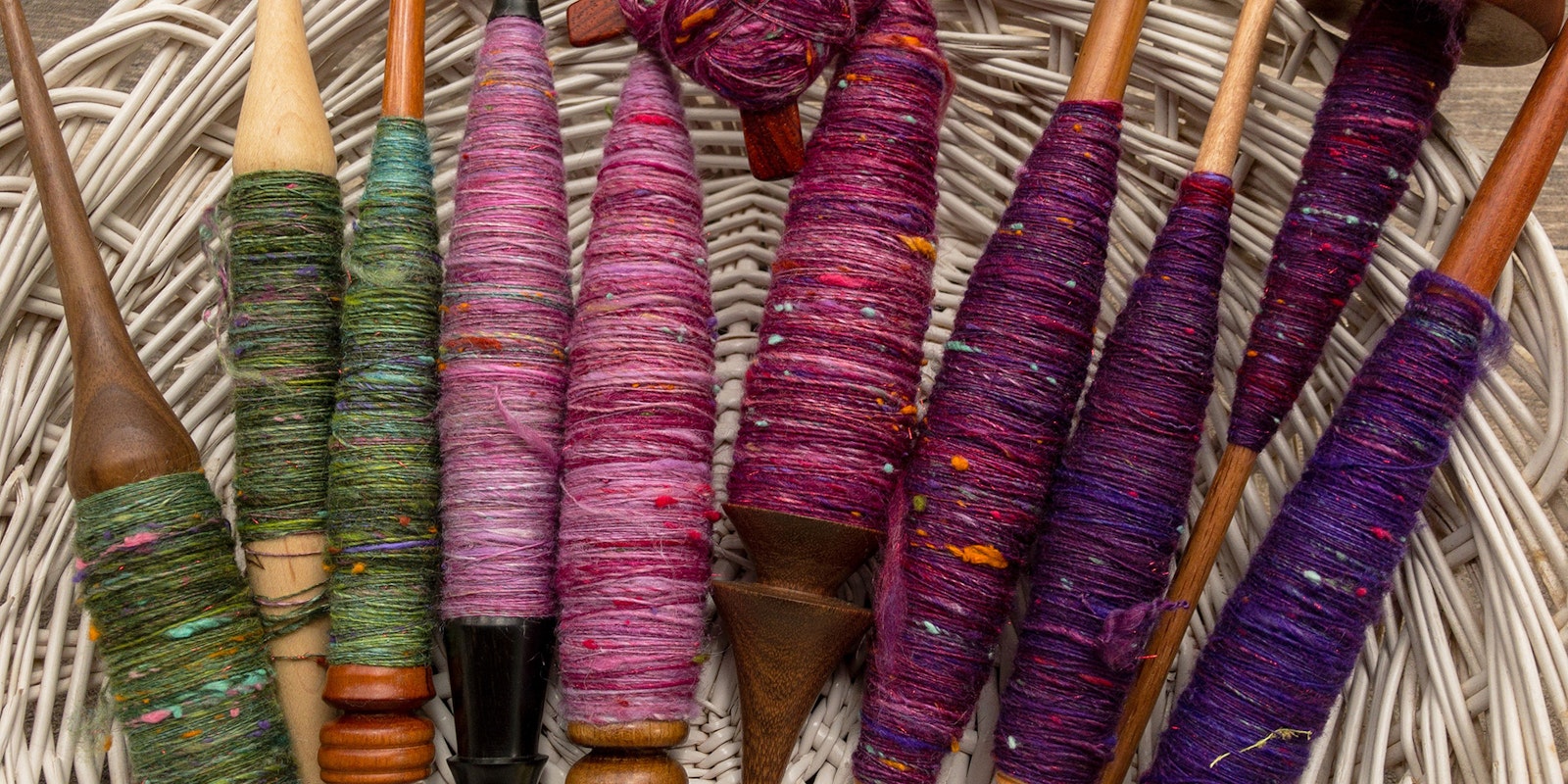Although I love to spin on my spinning wheel, there’s a special pleasure for me in spinning with a handspindle. The number one question people ask about my spindle spinning is how I go about plying my singles yarns from the spindles. I follow my mood when deciding how to ply yarn spun on my spindles, but it always involves winding singles off the spindle shafts using items I have around the house—no spindle kate necessary.
This preview of the yarn—letting the singles run through my fingers after spinning but before plying—is rewarding, and I find the little time it takes to wind the singles to be yet another meditative step in a joyful process. Better still, I’ve noticed that my end yarn benefits from this extra step, because winding off singles helps the twist to settle more evenly throughout the yardage. The singles are easier to ply, and I can remove any bits that don’t pass muster before they end up in the final product.
My three favorite ways of winding yarn off the shafts of my spindles
Plain old ball-winding, with a solid core
It doesn’t get any more basic than this, though starting to wind around a small ball (such as a ping pong ball, golf ball, or mini tennis ball) will get the best results. Instead of winding the yarn onto my thumb or a nostepinne, I wind it over the ball, which creates a stable core for the yarn to cling to. You could skip this solid core, but expect to lose time and/or yardage to knotted tangles if you do, as the hollow areas within the wound ball tend to collapse upon themselves as the yarn ball loses volume.
How do I get the singles yarn off the shaft? Nothing fancy; while seated, I park the spindle between my knees, with its end pointed straight up. From there, I wind. Works great.
New use for business cards
 Orenburg lace yarns after plying are stored on small card discs. Photo by Matt Graves
Orenburg lace yarns after plying are stored on small card discs. Photo by Matt Graves
This is a riff on spinning and plying Orenburg lace yarns. It’s similar to the plying ball, except I wrap my singles around silver-dollar-sized disks that I’ve cut and notched to hold the yarn in place. I find that business cards offer the ideal weight of cardstock for this task.
Weaver’s windoff
 A set of singles wound onto weaving bobbins
A set of singles wound onto weaving bobbins
Usually part of a weaver’s studio, where they’re used to wind yarn from cones to weaving bobbins, bobbin winders are a spinner’s friend, too. This method is a new favorite of mine for its ease, speed, and overall level of fun. Whenever I use my new-to-me bobbin winder, I remember the friend from spinning guild who so generously gave me her extra winder. (Spinning guilds are so worth joining!) When I’m plying together multiple bobbins, I like to mark my plastic bobbins with a dot from a black Sharpie on one end. This way, I know that the yarn is winding off from the same direction, either over or under the bobbin, without having to look at the yarn. (Bonus: These bobbins will fit onto your lazy kate.) Winding off onto a weaving bobbin is as easy as letting the spindle rotate freely in the open palm of one hand while working the winder with the other.
 Rewinding singles from my bobbins before plying improves the qulity of the plied yarn.
Rewinding singles from my bobbins before plying improves the qulity of the plied yarn.
You may have noticed that the three windoffs on my list of favorites yield just one exposed end of yarn from each yarn ball. Any of these methods are perfect for a chain-plied yarn or one ply of a multi-ply yarn, but not for plying from both ends of a ball (often known as Andean plying).
Debbie Held is a freelance writer, self-proclaimed spinster, and an international spinning instructor. She’s been blending wool and words since 2015, when she merged her career in journalism with her handspinning obsession—and she hasn’t stopped talking (and writing) about spinning since.
Originally published November 7, 2018; updated June 13, 2022.

